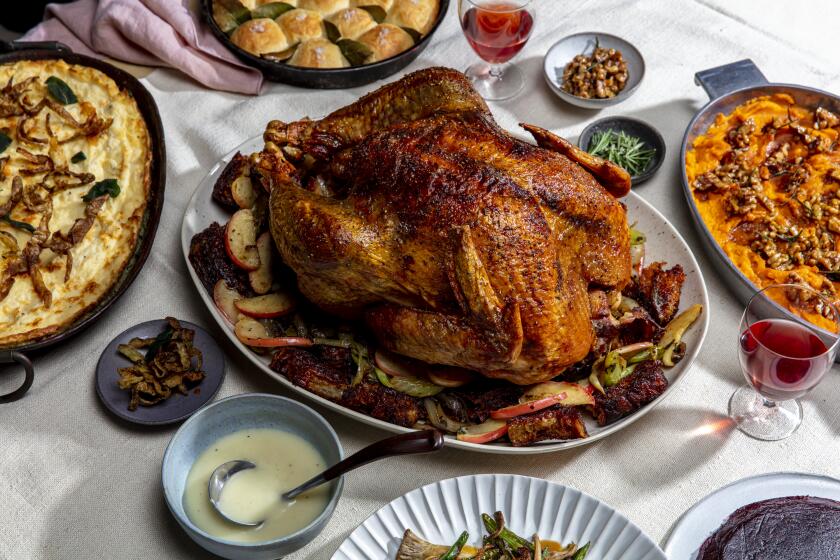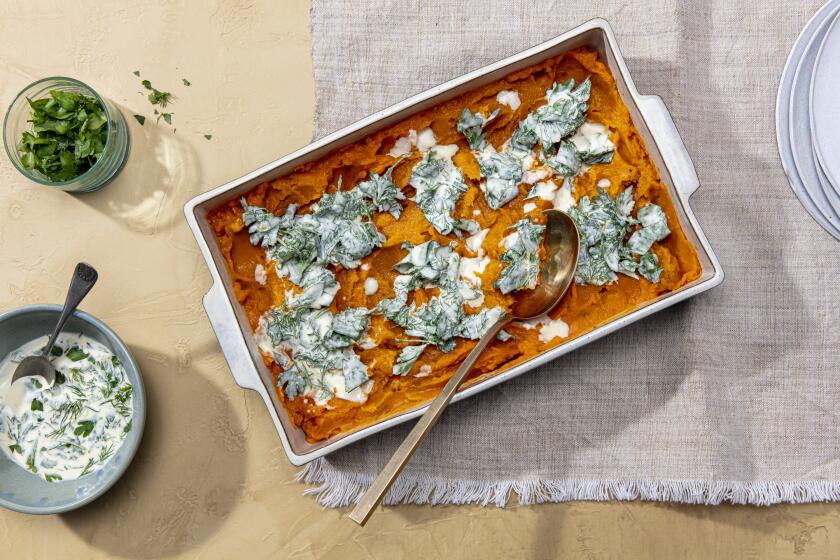Forget the marshmallows: Slow-roasted yams deserve better toppings for Thanksgiving
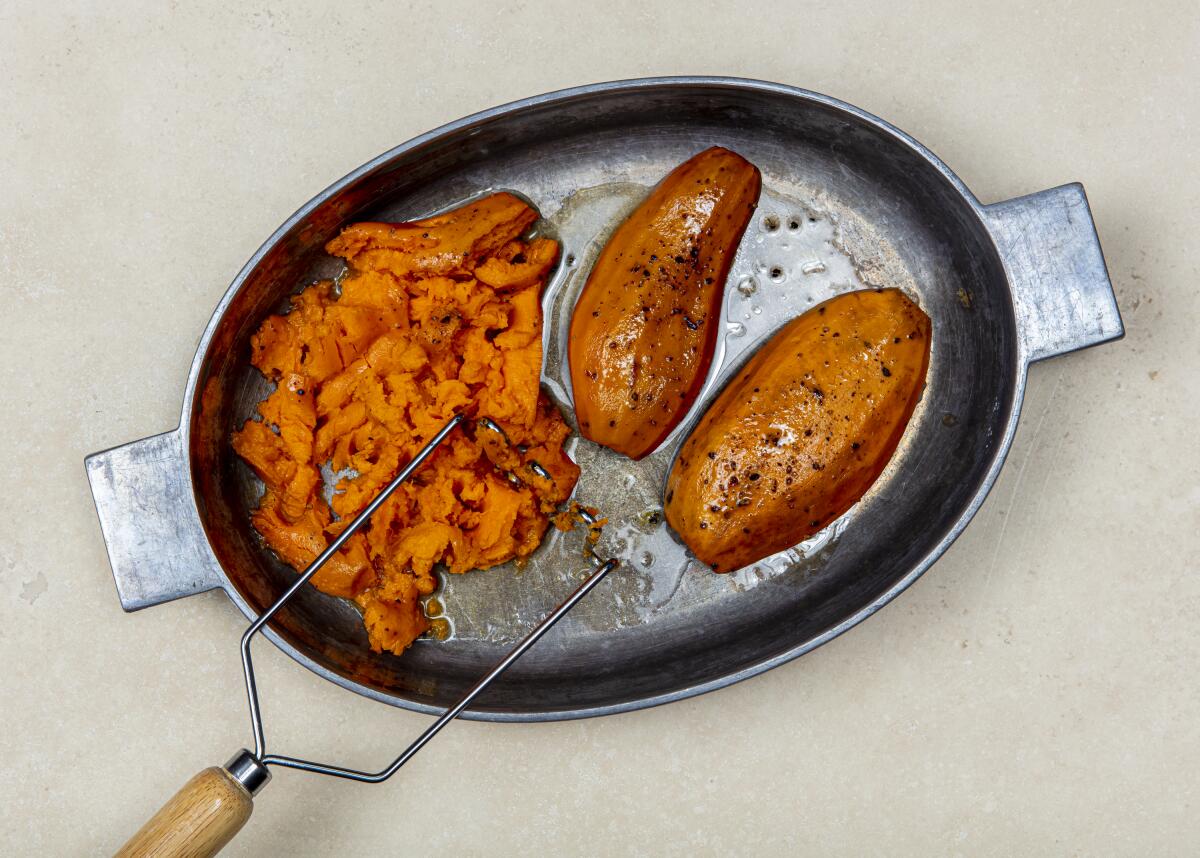
- Share via
Thanksgiving in 2020 is going to look a lot different in more ways than one. Instead of doing things the way they’ve always been done, here are recipes that throw tradition out the window — at least just this once — and play around with the expected holiday tropes. You’ll see that the classic dishes can be much easier — and more fun — when you focus on highlighting the qualities in each that really matter.
After almost a year of being at home and the same old, same old, reinvigorate your Thanksgiving table with a fresh outlook on the traditional holiday staples.
The presence of an orange-fleshed tuber or squash, mixed with sugar and spices and then baked with more sugar on top, always perplexed me as a side on the Thanksgiving table — isn’t that treatment for the dessert pie? Nevertheless, as someone with a big sweet tooth, I never complained. I grew up with yams covered in a salty-sweet brown sugar and cashew crumble — not marshmallows — but as I’ve gotten older, I much prefer them covered in some kind of sour dairy and lots of fresh herbs to balance out the natural sweetness of the tuber.
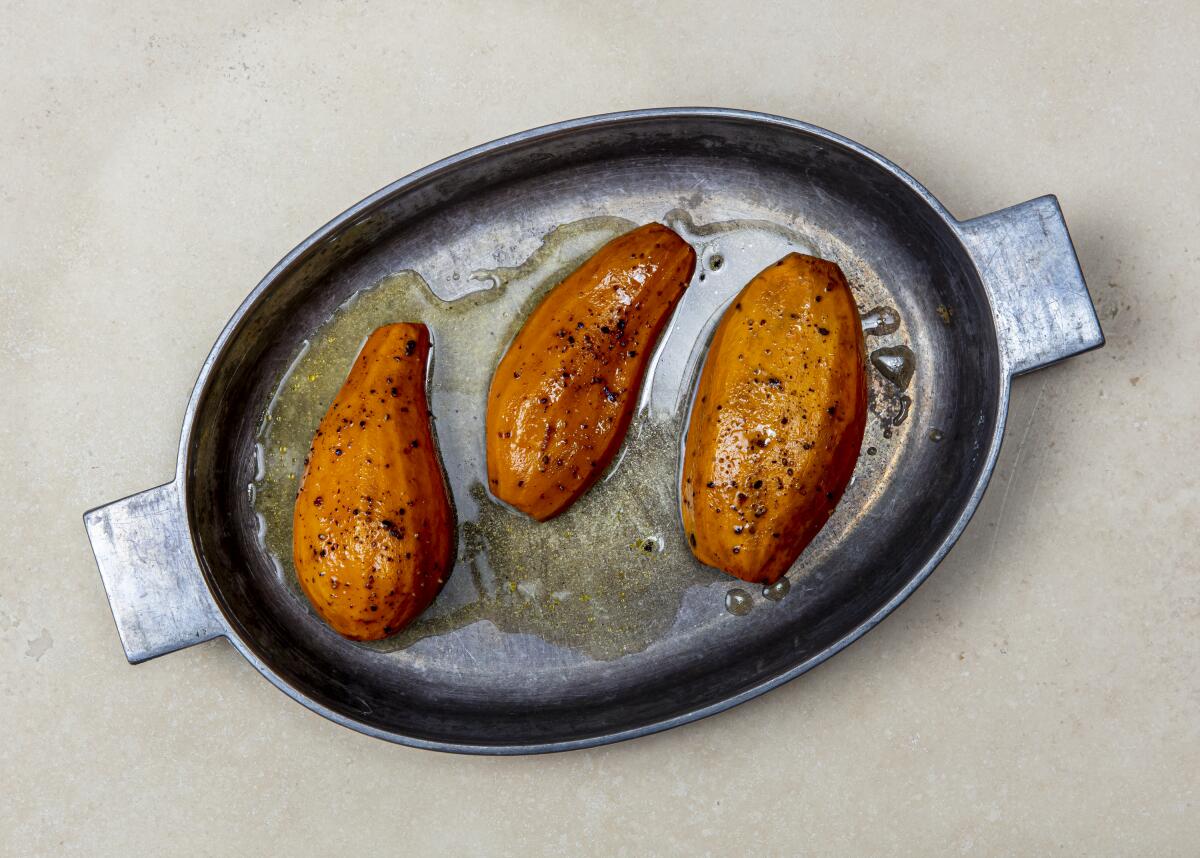
To keep both sides of my brain — or dueling members of your family — happy, I like to serve yams with two toppings:
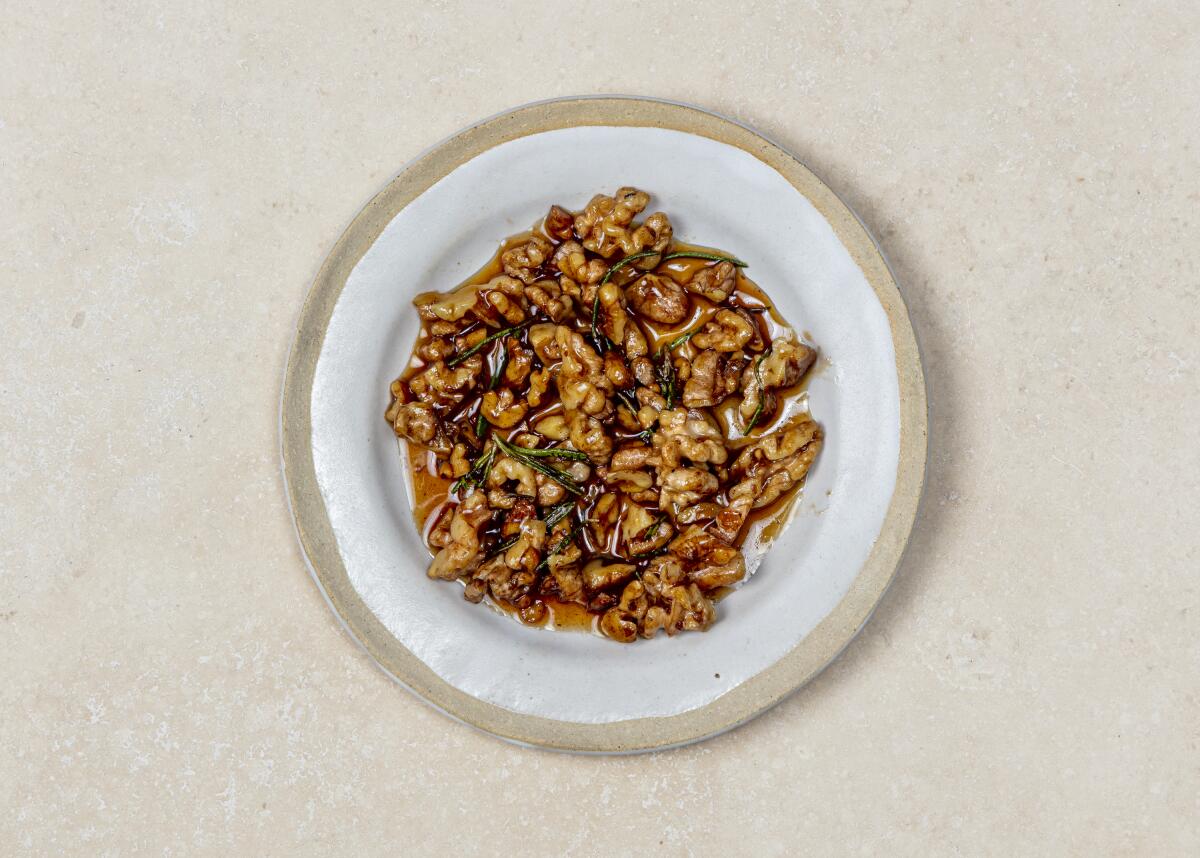
The first satisfies a sweet tooth, but with a balanced, grown-up edge to it. Walnuts are toasted in butter with lots of rosemary and salt before being coated in maple syrup and a splash of lemon juice to cut through the saccharine. Toppled over the yams, they offer crunch and an almost savory sweetness.
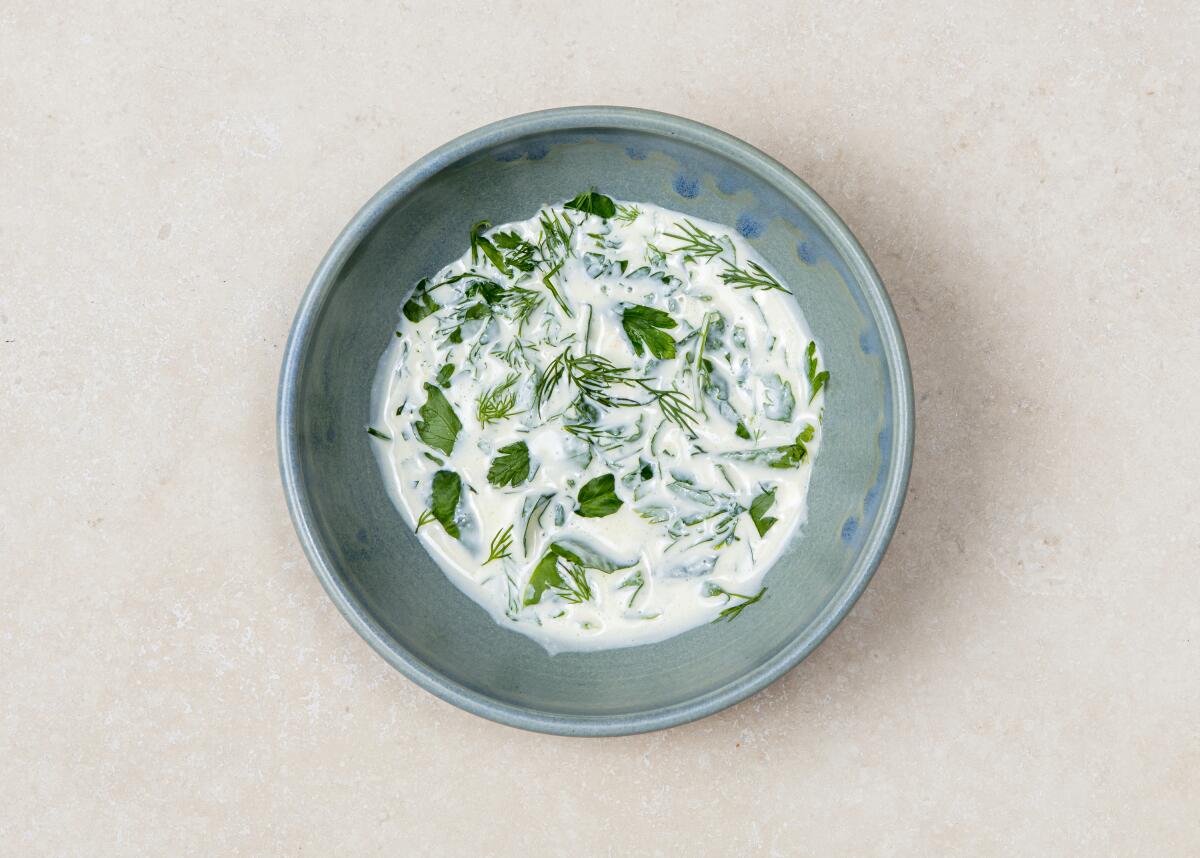
The second is my take on a German “seven-herb” sauce, which I often make as a dip for crudité because of its proto-ranch flavor profile. Three kinds of sour dairy — buttermilk, yogurt and sour cream — lend their distinct bacterial tangs to the sauce, which is thickened by a hard-boiled egg — just the type of old-school technique I love — and combined with dark green leafy herbs and hearty salad greens like flat-leaf parsley, arugula, watercress and chives. Although you’d need seven different herbs to make the sauce in a traditional manner, you can get away with just two or three. I keep the herbs very roughly chopped so their verdant bite and the sourness from the dairy balance the yam’s sweetness.
To keep the canvas blank, I cook the yams simply with olive oil and season them only with salt and pepper. The key is to roast them covered and at a very low temperature for a very long time. This equation yields yams that buckle at the gentlest prodding, becoming an instant mash in their pan. There is no extra sugar and no spices mixed in to cover up their beautiful flavor, allowing them to safely inhabit the side dish territory of the holiday table once and for all.
Very Slow-Roasted Yams With Rosemary-Maple Walnuts
Very Slow-Roasted Yams With Seven-Herb Sauce
More to Read
Eat your way across L.A.
Get our weekly Tasting Notes newsletter for reviews, news and more.
You may occasionally receive promotional content from the Los Angeles Times.
